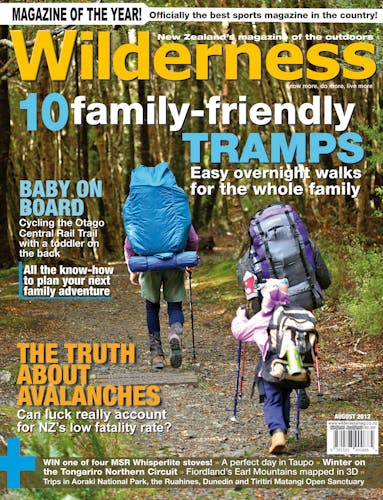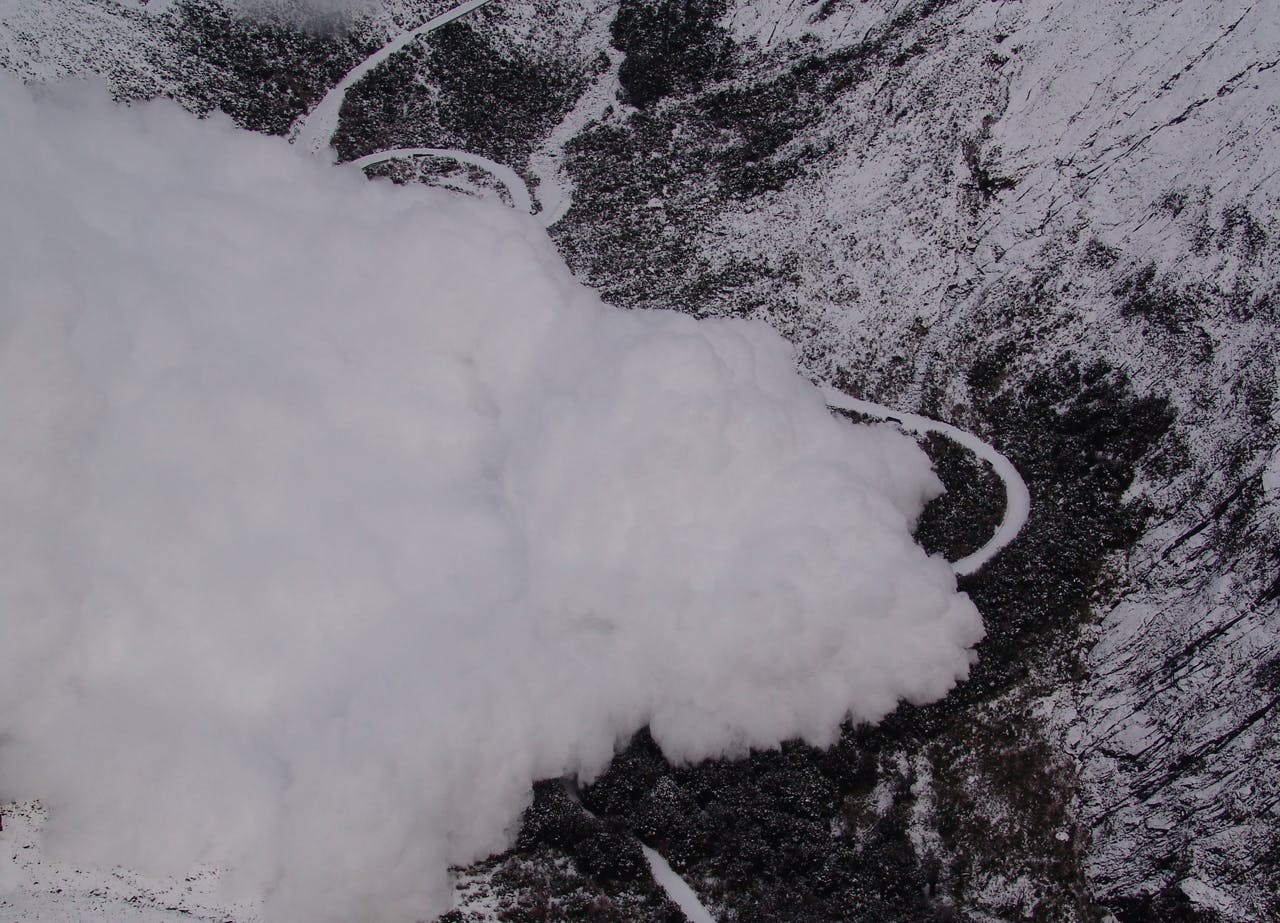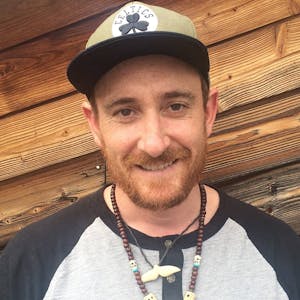Avalanche fatalities in New Zealand are low compared to many other nations, but experts here say that is more down to luck than anything else
Ending up in a wheelchair is the last thing Paul Bishop imagined would result from a day trip to the summit of Mt Egmont/Taranaki.
But with one broken ankle and the other severely strained, his options for getting around are seriously limited.
“The worst part has been sitting on my bum all day and not getting enough blood flow around my body,” says Bishop wearily. “I’ve had to do a lot of exercises on the floor or my legs start seizing up.”
Stiff legs must be an inconvenience, but the truth is, as with so many avalanche survivors, Bishop is lucky to be alive.
When I first rang to interview him about his dramatic avalanche accident, which made headlines in June, he sounded confused. Suffering from shock is unsurprising given what happened.
Bishop has only been back in New Zealand for six months after living in Europe, the US and Chile for the last 17 years. He began alpine climbing in his university days and continued while abroad.
Since coming home, he has been working as a production manager for Vector where he met fellow outdoor enthusiast Christian Hanson.
In June, they decided to climb Mt Egmont/Taranaki; their first trip together and the first time in 17 years Bishop had climbed in Egmont National Park.
“We were going to the summit and planned to be home for lunch,” he says. “The plan was just to walk up, not do anything crazy, just a simple walk to the top and back.”
However, things went more than a little crazy.
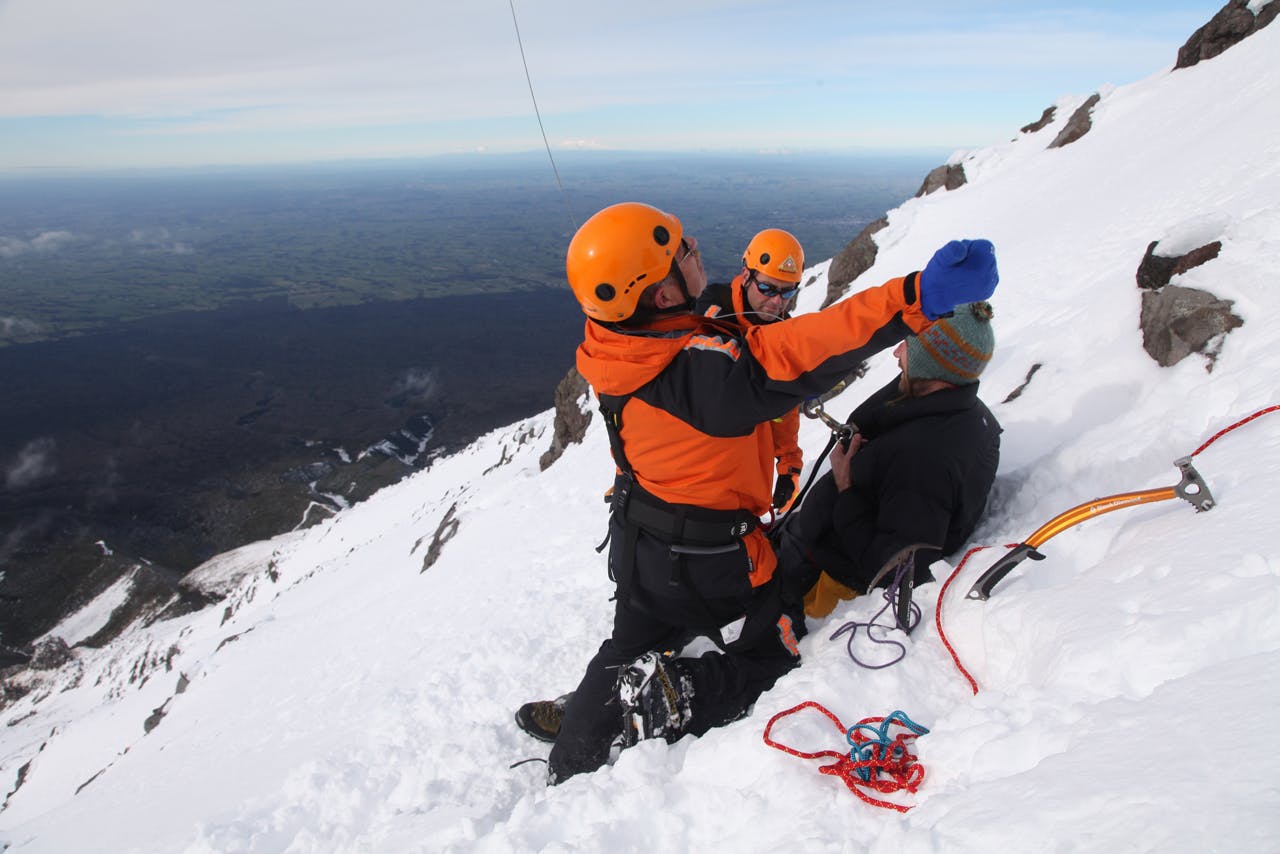
Christian Hanson about to be winched to safety
They started at six in the morning and greeted the sun as it rose over Tongariro National Park. It was a clear day, with no wind and the two acquaintances chatted and got to know one another. The snow was 13 or 15cm deep – “perfect for crampons”, Bishop says.
But as they were entering the crater from a narrow valley on the north side they heard the sound every climber dreads: “Whoomf!”
Three metres ahead of them, an avalanche about 60cm deep and 20m across began sliding down the mountain.
“I immediately knew we were in serious trouble,” Bishop says. “I looked back and Christian was behind me and we both started running.
“I was hoping to run over the top, make a dive and plant my ice axe and let the whole thing fall below me, but it moved too quick and turned to liquid. I was thinking this could be it.”
The avalanche tumbled Bishop and Hanson 500m down the mountain; including a vertical section of free fall. “It was like the fastest rollercoaster you’ve ever been on and maybe faster,” Bishop says. “That’s the scary part, how fast we were going.”
If it wasn’t for his helmet, one of three head blows he received may have killed him.
He struggled to breathe as the avalanche spun and somersaulted him, twisting his legs and body. When he finally came to a stop the snow sealed around and on top of him, causing him to choke.
“It wasn’t that much snow on top of me, maybe only four or five inches,” he says. “I was frantically trying to clear it, but only part of my hand was free.”
Luckily, the avalanche didn’t bury Hanson who quickly dug Bishop out.
They sought shelter behind a small rock outcrop and called for help. The Taranaki Community Rescue Helicopter quickly arrived and took them to Taranaki Base Hospital.
“I’m really thankful that at the end of the day we don’t have too many injuries, but I’m still really perplexed that it happened – it’s very unusual,” Bishop says. “I understand it’s the first time anyone has been caught in an avalanche on Mt Taranaki.”
Accidents like Bishop’s do seem freakish, or unlucky, occurrence in New Zealand. But are they?
In Canada, there about 10 avalanche fatalities each year. In the US, the average is 19. In France, it’s around 30. In New Zealand the average number of avalanche fatalities hovers around two a year. According to Canterbury University professor Ian Owens that number has been gradually decreasing over the last three decades.
Owens is working on an update to his book Avalanche Accidents in Aotearoa-New Zealand which was first published in 2002. He’s a member of Mountain Safety Council’s Snow and Avalanche Committee (SAC) which provides advice and support to MSC on ways to foster public safety in snow environments.
SAC was a response to a high profile accident on Ball Pass in Aoraki/Mt Cook National Park in July 1975 when 27 New Zealand Air Force personnel and instructors were caught in an avalanche with four killed.
Owens says the peak of avalanche fatalities was in the mid 1980s and has been decreasing since. In the 10 year period between 1980 to 1989, 23 people died due to avalanches in New Zealand. From 1990 to 1999 the number dropped to 17 and between 2000 to 2009 it fell to 15.
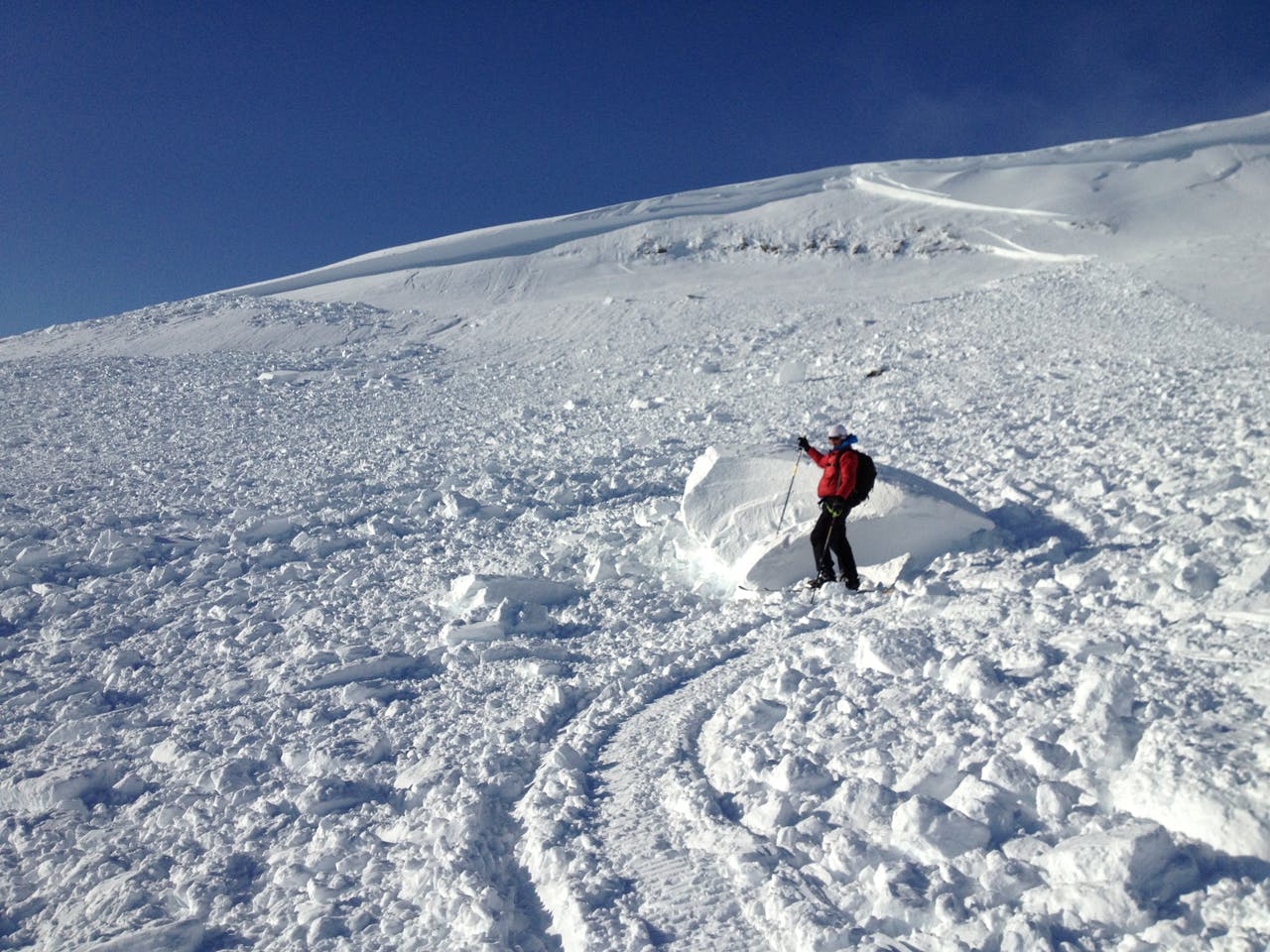
Slab avalanches are more dangerous than loose avalanches
Owens hopes the decrease in deaths reflects the efforts of SAC and Mountain Safety Council to improve avalanche awareness among the outdoor community. SAC established the InfoEX (information exchange) public avalanche forecasting programme in 1998 to provide authoritative information about avalanche danger for 13 areas of New Zealand.
However, Owens acknowledges he isn’t sure SAC’s efforts and InfoEX are the cause of the decrease. There may be other contributors which he hasn’t been able to verify.
“It’s unlikely participation rates have decreased, but we don’t have very good information on that,” he says. “There could also be some climate effect with winters less amenable for avalanche occurrence.”
According to MSC’s avalanche programme manager Andrew Hobman, this decrease in deaths and New Zealand’s overall low number of avalanche deaths compared to other countries, could be nothing more than blind dumb luck.
Hobman points out that while the average annual number of fatalities has decreased, the number of non-fatal avalanche incidents remains high.
Between 2000 and 2009, for example, 295 people were caught in avalanches in New Zealand. But Hobman says the real number of non-fatal incidents is higher still.
The 295 incidents were captured through MSC’s InfoEX system based on information provided by professional operators including ski fields and heliski and guiding companies.
“We don’t capture all the people that are getting caught who are just part of the general public,” Hobman says. “From anecdotal evidence we think there’s probably double that number.
“That’s a serious number of people actually getting caught and by pure luck really they’re not becoming fatalities, but a slight change in circumstances and New Zealand could have a significantly higher fatality rate.
“When we look overseas we see how easily a whole group can get taken. That’s our primary concern; that large groups can all die.”
The worst example of a large group dying in New Zealand occurred in 1863 when an avalanche fell upon a mining camp in Serpentine Gulley, near Dunstan, burying 41 people under 16m of debris.
One of the most high profile examples of a multiple fatality avalanche accident occurred in 2004 when four out of six climbers were killed by an avalanche on Mt Tasman. It killed Dave Hiddleston and Paul Scaife, two of New Zealand’s top mountaineers and the then directors of Aspiring Guides, mountain guide Dave Gardner and Australian client Andrew Platts. Two other clients in the group survived.
The death of Hiddleston and Scaife was a major shock and loss to the outdoor community and resulted in the New Zealand Mountain Guides Association creating the Hiddleston-Scaife Commemorative Trust in their honour.
The group was climbing Mt Tasman when a small avalanche tumbled them 500m and over ice cliffs. Alpine Guides mountaineer Marty Streat was in the rescue party and says it was a miracle anyone survived at all.
“When I got there it was six people and just a big tangle of ropes and gear spread over 20m of terrain,” Streat says. “The avalanche was so small the debris didn’t even get to the bottom, just the people.
“If they’d been caught in that slide above a favourable run out, they wouldn’t even necessarily be buried by it. It all depends what you bang into or fall over on the way down.”
Otago Polytechnic sport and adventure senior lecturer and NZOIA President Andy Thompson knows firsthand how a small bit of luck makes a big difference in an avalanche accident.
He’s one of the members of what he calls the “buried alive club”.
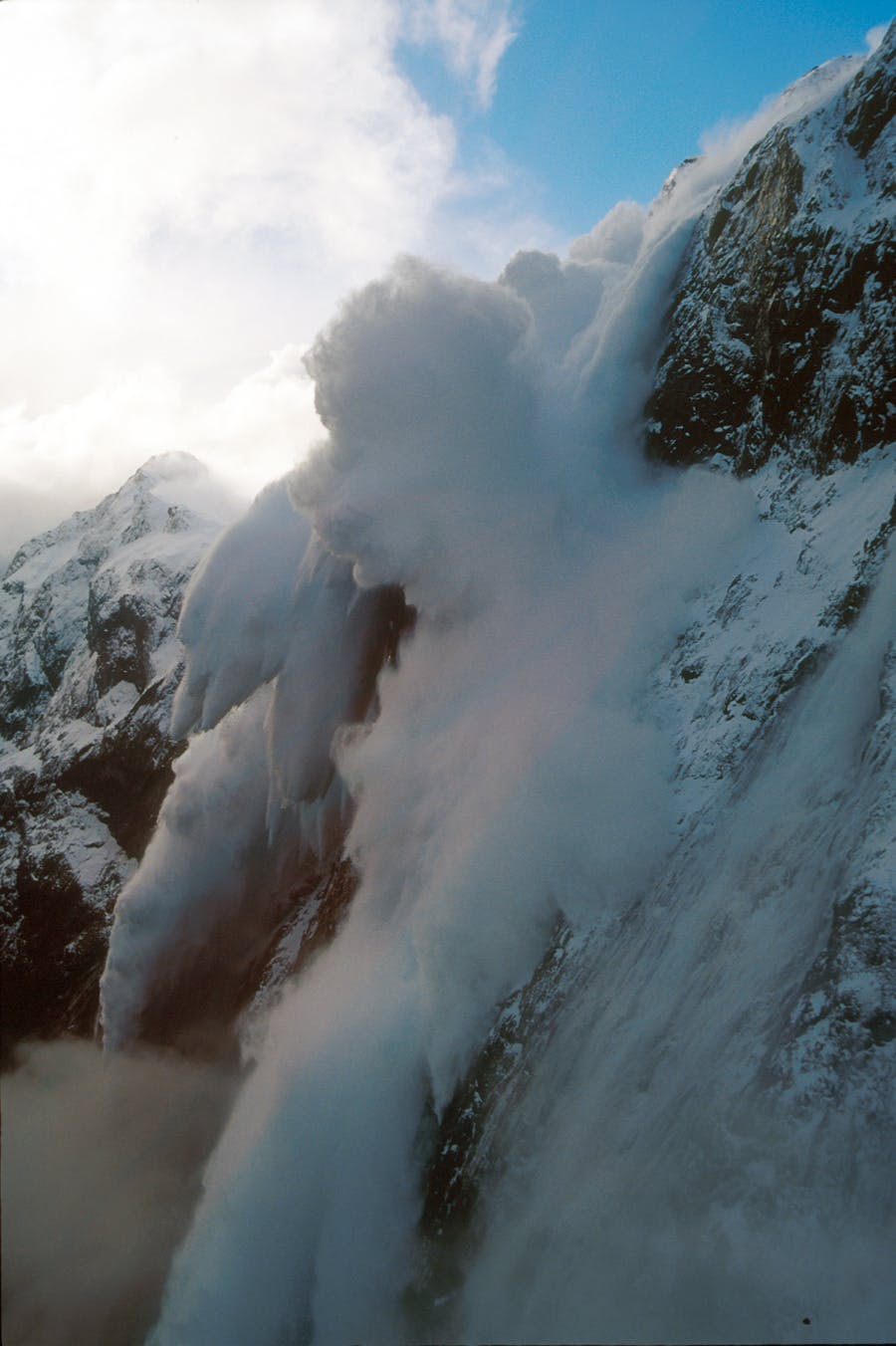
Massive size four and five avalanches are common around Milford Rd
Back in 1991, he was a civilian mountaineering instructor for the Army Adventures Training Centre. He and co-instructor Will MacQueen were leading two soldiers on a climb of Mt Sealy when an avalanche broke and flung them 300m down the slope.
Thompson’s head was just underneath the surface and in struggling and thrashing for air, he managed to break through and poke his head out.
“I looked around and it was beautiful day, with a stunning blue sky, but everything was deathly silent and still,” Thompson says. “Really weird questions went through my brain like why me, why am I still alive? I thought I was toast.
“Then within a millisecond a big clock came in front of me. We’d done a lot of training in avalanche rescue so I immediately shot into action, but I couldn’t even move.
“I had one arm and my head free, but everything else was locked into place like it was sealed in concrete. I had to excavate every bit of snow to get myself out.”
Thanks to that one free arm, Thompson was able to save himself and the other three group members who were all unable to extricate themselves. If he’d been buried only a few inches deeper, or if the avalanche had taken them over a cliff, the outcome would have been very different.
“We came out clean; we didn’t have any puncture wounds, we didn’t have any dislocations, or broken bones,” Thompson says. “It was quite amazing because we were tossed around going down.
“I don’t believe we survived as a result of good skill management, we just happened to be very lucky.”
Heli-ski guide Mark Sedon also caught a lucky break in an avalanche that dragged him down Mt Green in 1995. The tennis-court size avalanche threw him into a crevasse, through the wall and into a side crevasse where he was buried upside down with his mouth stuffed full of snow.
“Luckily my hand was near my mouth so I was able to use my finger to fish the snow out without being able to move any other part of myself,” Sedon says. “My other arm was down by my knee so I slowly cleared a bit of a pocket out from above me.
“Eventually I was able to dig myself out, undo my pack and wiggle out of the hole.
“I don’t know how I smashed through the back wall because normally they’re made of blue ice and you just bounce off.
“If that had happened I would have been at the bottom of the crevasse with avalanche debris on top of me and my skiing partner wouldn’t have been able to find my body.”
This gets to what MSC’s Andrew Hobman means when he says it’s only luck the number of avalanche fatalities in New Zealand isn’t much higher – it would only take a handful of accidents with unlucky variables to completely change the statistics.
Hobman is particularly concerned about the fact mountaineers make up 50 per cent of the avalanche fatalities in New Zealand with the rest made up of skiers and road workers.
More skiers are caught in avalanches than mountaineers, but ski slopes offer a gentler run off whereas even small avalanches can knock climbers down steep flanks or over bluffs.
In the backcountry, far away from help, climbing parties also have a limited window to rescue themselves whereas ski fields are monitored and have all the state-of-the-art facilities for a quick rescue.
Many avalanche fatalities are a result of trauma received in descent. Hobman says if someone survives the ride, they have a 90 per cent chance of survival if they’re dug out in eight to 10 minutes. After that, their chances fall quickly.
Asphyxiation due to snow blocking the airway is one of the main causes of death. If snow isn’t obstructing the breath, then it’s possible to breathe oxygen held in the snow. However, if buried, the CO2 has nowhere to go and eventually a trapped person will fall unconscious and die of apnea.
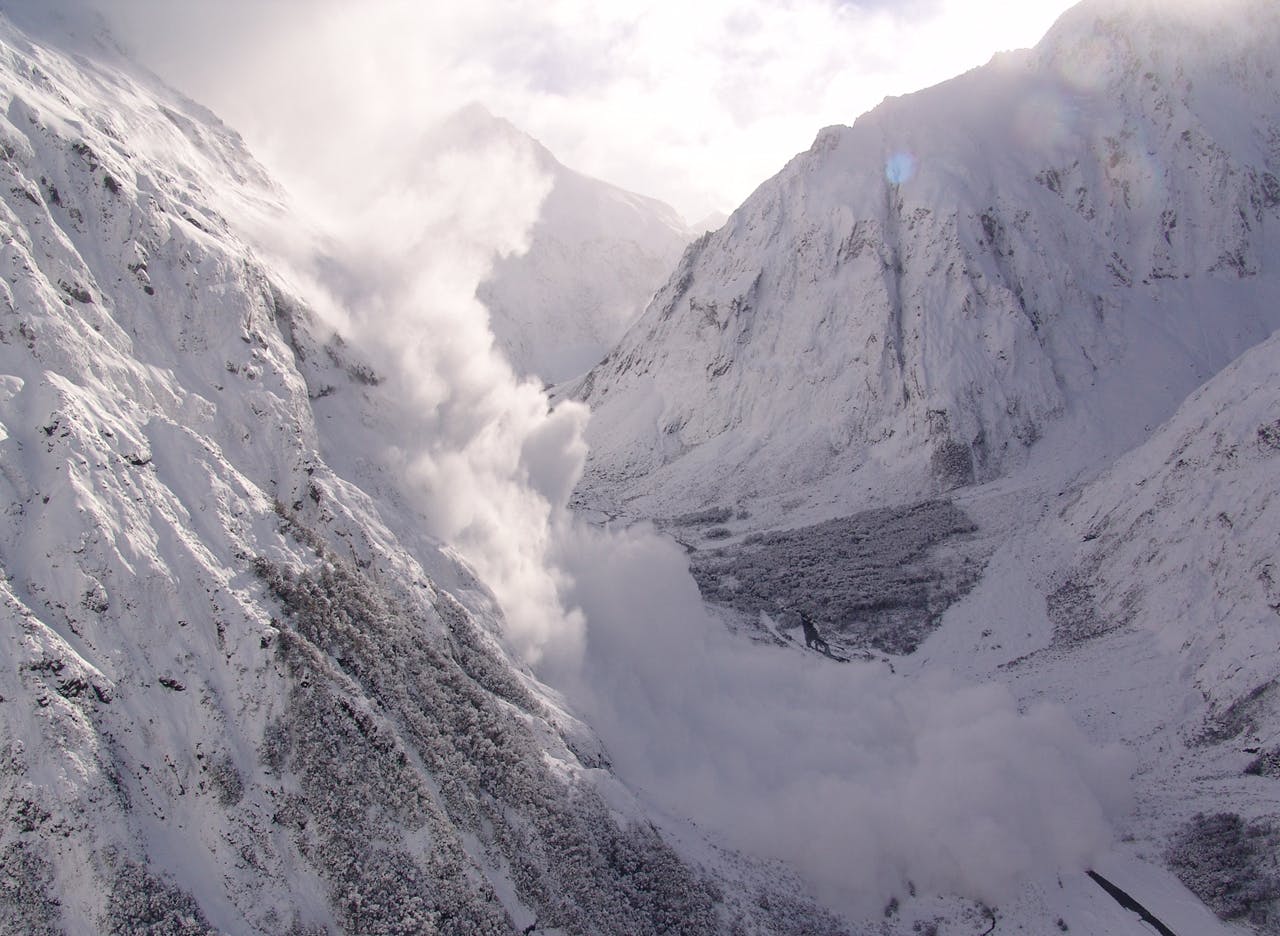
Avalanche man Wayne Carran has been working on Milford Rd for 29 years releasing avalanches
“If you’ve been buried for around 35 minutes then hypothermia starts to come into play,” Hobman says. “You can have an air pocket and be breathing fine, but just because of the nature of the environment hypothermia becomes deadly.
“The longest time someone has survived being buried by an avalanche in New Zealand was Air Force pilot Paul Gazley who was rescued after 11 hours.”
Only a few years later in 1975, Gazley’s luck ran out; he was one of the four Air Force personnel killed by the avalanche on Ball Pass.
Luck seems an unscientific and too vague a notion to explain New Zealand’s low number of avalanche fatalities compared to other countries. But when quizzed about this, Hobman says he has no other verifiable explanation.
“I think it really is luck. I can’t really put too much else to it.
“The guys on Taranaki were extremely lucky. They were very, very lucky that one of them was on the surface to dig the other out. They were also perilously close to being flushed over quite a large cliff.”
Hobman says if the pair had a better understanding of avalanche conditions, they would have realised they were walking into a dangerous situation.
“The gulley was full, it was wind loaded, and they were on the leeward side of the hill. It was ripe conditions for it and they triggered one.
“It caught some of the locals by surprise, because they didn’t think there’d be much snow, which highlights the fact that anytime you’re in snow and the angle and terrain is right, you can trigger an avalanche.”
Nearly everyone I interviewed for this story agrees Kiwis are still relatively naive about avalanches compared to people in other countries.
“New Zealanders are shocking,” says Mark Sedon, who’s guided all over the world. “People coming from the cities, coming on holiday, have no idea. It’s because we’re not a mountain country, we’re a rugby and sailing nation.
“The MSC is doing a good job of educating people, but generally New Zealanders are pretty naive about avalanches.”
Hobman, SAC and MSC are working hard to improve awareness here which involves dispelling a number of avalanche myths still current in New Zealand.
“There still seems to be a perception we don’t really have avalanches in the North Island,” Hobman says. “And still the joke is that they don’t have avalanches on Taranaki, or they only happen at night.”
As luck would have it, Paul Bishop is alive to set the record straight on that one.
Avalanche myths
The top myths associated with avalanches according to Mountain Safety Council’s Andrew Hobman
Myth: Avalanches only happen in winter
Fact: In summer in New Zealand more climbers die due to avalanches than skiers do in the whole year
Myth: Avalanches are only caused by natural forces
Fact: Hobman says 90 per cent of avalanches that involve people are triggered by the party
Myth: Avalanches only occur after a storm or heavy snowfall
Fact: It might have been beautiful weather for a week, but in a matter of hours wind can transport snow crystals from one place to another, creating the conditions for an avalanche
Myth: Sound can trigger avalanches
Fact: Hobman says “the yodelling shepherd at the bottom of the valley” cannot trigger an avalanche
Myth: All the avalanche experts are dead
Fact: Some avalanche experts, such as New Zealand’s founding father of avalanche research Dave McNulty, have been killed by avalanches, but the vast majority of avalanche professionals have avoided the white death
Myth: Avalanches only happen in the South Island
Fact: Paul Bishop’s experience proves otherwise, as do some of the previous avalanche incidents in Tongariro National Park.
Myth: On Mt Egmont/Taranaki avalanches only happen at night
Fact: Hobman says this is one of the jokes he often hears
Myth: If I’m walking on the valley floor I’ll be safe
Fact: DOC has been putting a lot of energy into avalanche signage on popular tracks for a reason
The five signs of avalanche danger:
- You have heard or seen that avalanches are happening in the area
- Signs of instability such as cracking in the snow, the sound of snow collapsing beneath you
- Heavy rain or snow in the last 24 hours
- Wind loading on leeward slopes
- Temperature changes such as rapid warming from sunlight





